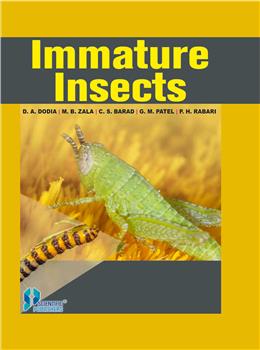d a dodia m b zala g m (1 resultados)
Tipo de artículo
- Todo tipo de artículos
- Libros (1)
- Revistas y publicaciones
- Cómics
- Partituras
- Arte, grabados y pósters
- Fotografías
- Mapas
-
Manuscritos y
coleccionismo de papel
Condición
- Todo
- Nuevos
- Antiguos o usados
Encuadernación
- Todo
- Tapa dura
- Tapa blanda
Más atributos
- Primera edición
- Firmado
- Sobrecubierta
- Con imágenes del vendedor
- Sin impresión bajo demanda
Ubicación del vendedor
Valoración de los vendedores
-
Immature Insects
Publicado por Scientific Publishers, 2023
ISBN 10: 9390749700ISBN 13: 9789390749706
Librería: Vedams eBooks (P) Ltd, New Delhi, India
Libro
Hardcover. Condición: New. Contents: 1. Methods of collection and sampling insect pests. 2. Killing and preservation of insects. 3. Insect metamorphosis. 4. Hormonal control of metamorphosis. 5. Methods of diagnosis and detection of various insect pests. 6. Insect egg. 7. Insect larva. 8. Insect pupa. 9. Nymph, naiad, wigglers and crawlers. 10. Defence mechanisms in immature insects. 11. Rearing of immature insects. 12. What is taxonomic keys. 13. Identification keys to the orders. Among several constraints in food productions, the damage due to insect pests is of major importance. The most of insect species are herbivorous, devouring around 20 per cent of the world's total crop production annually. In most insects of economic importance immature stages cause severe damage. In general, insects spend considerably more time in their immature stages than they do as adults. An attempt has been made to prepare material in details with best quality pictures/photographs about immature stages of insects. This book includes separate chapters for various immature stages of insects viz., egg, larva/nymph and pupa. It includes egg morphology with chronic attachment and sculpturing, types of eggs. The details about larva/nymph with classification, types of insect larva, larval morphology, chaetotaxy and larval mobility. Considering information about pupa, it includes types of pupa, classification, pupal morphology, sex determination of pupa and significance of pupal stage. Other than that, detail information about methods of collecting insects, preservation of insects, defense mechanisms in immature insects, rearing of immature insects, use of taxonomic keys for immature insects and other important aspects are also discussed, chapter wise.


